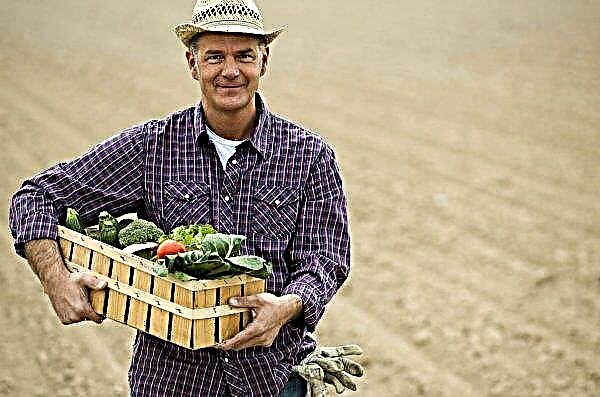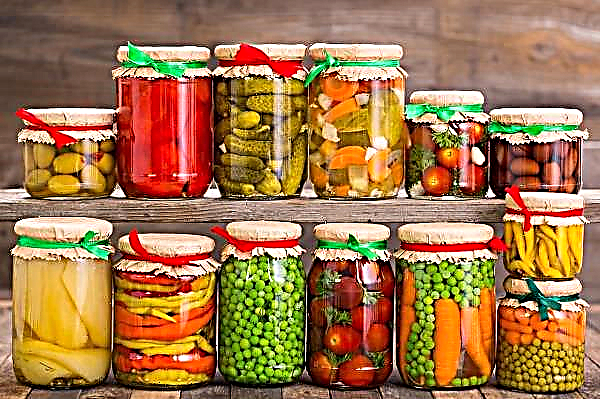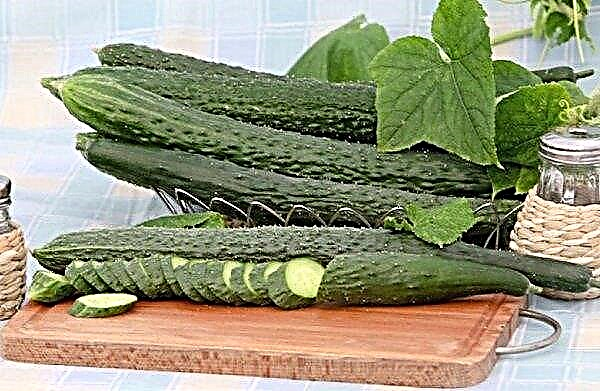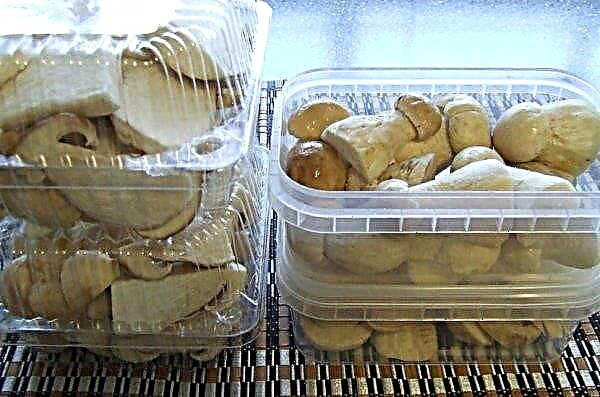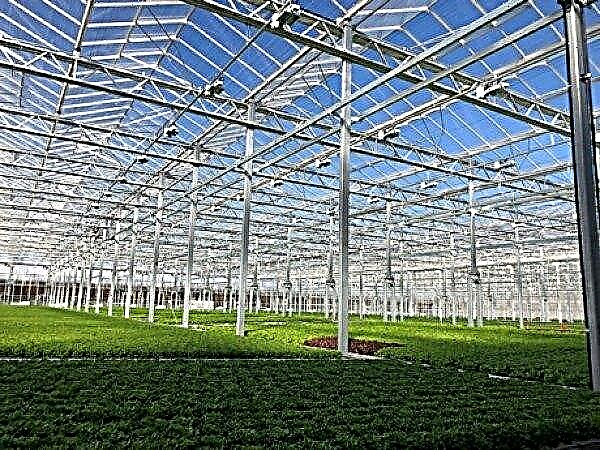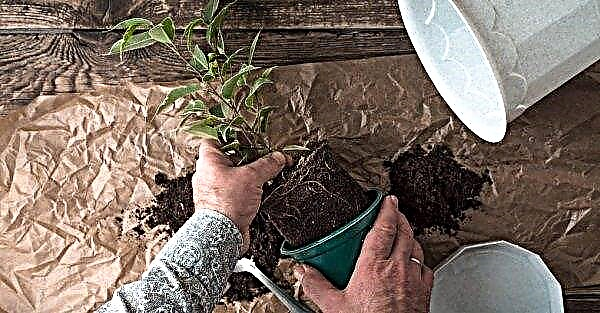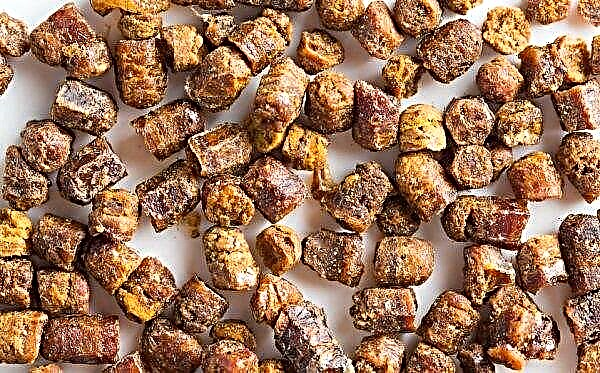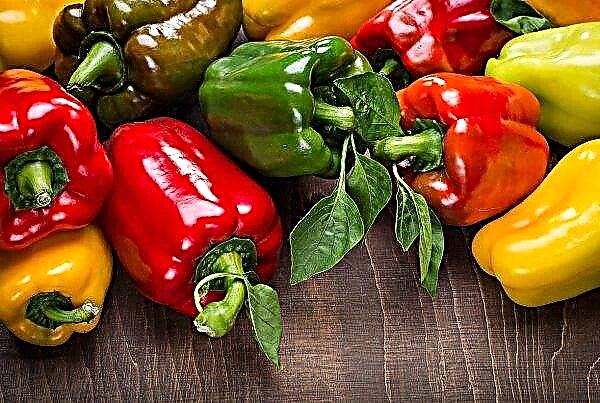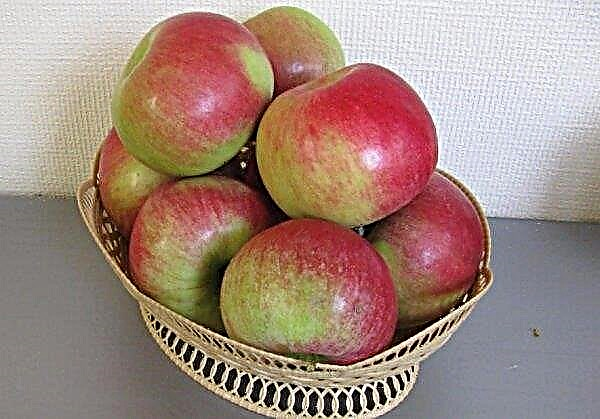Melon is a very tasty, sweet and healthy yellow fruit with a mass of valuable components. Given its positive qualities, it is not surprising that more and more gardeners from different regions of the Russian Federation are engaged in growing this plant every year. Each territory has its own characteristics, so from this article you will learn about the features of melon cultivation in the growing conditions of the most extensive region - central Russia.
How to plant a melon
Competent agrotechnics of melon cultivation provides for the implementation of a number of sequential actions, the first of which should be the selection of optimal timing for sowing seeds or transplanting young plants to a constant place of growth.
An equally important task will be the correct selection of the site, together with the organized preparation of seed material, not to mention the observance of the requirements of the technique for performing the planting event itself. In order not to be mistaken in your decision, it is worth listening to the following recommendations of experienced gardeners.
The timing
In the southern regions, sowing melon seeds directly into the ground is practiced, but this option is not suitable for the middle lane, since the fruit that has set will not have time to ripen before the end of the season. For this reason, the plant is propagated only by seedlings, sowing seeds in seedlings or a greenhouse only at the end of April. Tightened seedlings in open soil can only be transplanted after stabilization of daytime air temperatures at + 15 ... + 20ºC, with nightly drops to a maximum of + 6ºC. For successful adaptation of seedlings in new conditions, the soil must warm up to at least + 10ºC.
Tightened seedlings in open soil can only be transplanted after stabilization of daytime air temperatures at + 15 ... + 20ºC, with nightly drops to a maximum of + 6ºC. For successful adaptation of seedlings in new conditions, the soil must warm up to at least + 10ºC.
On the territory of the middle lane, such suitable conditions are not created earlier than the month of May, therefore, the planting of grown seedlings should not be performed earlier than the middle or better than the end of this month. Sometimes warming may occur earlier, but the problem is that weekly heat is often replaced by return frosts characteristic of the indicated growing region.
For comparison, in the northern regions, melon seedlings are not planted at a constant place of growth until the first weeks of June.
Important! Like many other plants, at the initial stages of its development, melon is very vulnerable to any adverse factors, so while it grows slowly and has not matured well, it is better to play it safe and cover the planting with non-woven covering materials, and use more durable shelters at night.
Seed selection and preparation
There are a lot of different melon varieties on the modern market, so there will be no problems choosing the right one for you.
At the same time, there are a number of general rules for the purchase of planting material:
- always visit stores with a good reputation;
- check the integrity of the package with seeds and their shelf life;
- Do not buy burnt or wet packages;
- make sure the quality of the melon seeds by asking the seller for an appropriate confirmation certificate.
 If you are not sure about the appropriateness of the purchase or do not trust the points of sale of planting material, then you can independently prepare the seeds. True, sometimes it happens that a strong plant grown from last year's seeds does not bring the proper harvest, since the fruit ovaries simply do not form.
If you are not sure about the appropriateness of the purchase or do not trust the points of sale of planting material, then you can independently prepare the seeds. True, sometimes it happens that a strong plant grown from last year's seeds does not bring the proper harvest, since the fruit ovaries simply do not form.Such a scenario is also possible, therefore, for sowing this year, it is desirable to prepare seeds of melon three-, four-year-old, which all this time were stored in a dark and dry place.
Seeds suitable for sowing will always be large, heavy and without signs of damage by disease or pests. Preplant seed treatment is based on their spraying with boric acid (with the addition of zinc sulfate) or soaking in a weak solution of potassium permanganate, in which the seeds must remain for at least 12 hours in a row.
To ensure rapid germination of the sown crop, it is appropriate to know how to germinate melon seeds. There is nothing complicated in this process, because you just need to wrap the seeds in moistened gauze or sprinkle them with wet sawdust, leaving it in this state for 2-3 days.
Seat selection and crop rotation
Melon is a southern plant, therefore, when choosing a place for planting it is necessary to select only well-lit and sun-warmed areas that are not affected by cold wind flows. The culture makes special demands on the level of lighting, therefore, if there is not enough sunlight, it is possible to stretch the lashes, on which fruit ovaries will not form in the future. Preparation of the site for planting begins in the fall and involves digging the soil onto the bayonet of a shovel with the further introduction of 3-4 kg of organic fertilizer (for example, rotted manure) per 1 m² of territory. If clay soils prevail in the chosen place, it is advisable to add river sand (0.5 buckets per 1 m²) to the substrate, which contributes to an increase in its friability.
Preparation of the site for planting begins in the fall and involves digging the soil onto the bayonet of a shovel with the further introduction of 3-4 kg of organic fertilizer (for example, rotted manure) per 1 m² of territory. If clay soils prevail in the chosen place, it is advisable to add river sand (0.5 buckets per 1 m²) to the substrate, which contributes to an increase in its friability.
With the advent of spring, the bed needs to be re-dug and, if necessary, fertilized with potassium-phosphate mixtures, mixing them with soil in the proportions indicated on the packages (on average, about 10 g of mineral fertilizer is consumed per 1 m²). Ready for planting soil should be light, nutritious and close to neutral in acidity (pH not more than 7.0).
The best precursors for melon are clover, perennial herbaceous plants, potatoes, cabbage, onions (on turnips) and crops. It is undesirable to plant melon in places where watermelons, melons, cucumbers, squash and squash, which have similar diseases and the same pests, grew up to it.
Did you know? In Russia, they learned about melon only in XV–XVI century, after it was introduced to the territory of the Lower Volga region from Central Asia. However, the mass distribution of culture was not observed then, and only wealthy people grew it in closed ground.
Sowing pattern and depth
In order for the planted melons to form large and sweet fruits over time, it is worth leaving at least 75 cm of free space between neighboring bushes, and about 1 m between rows with plantings. more than 3 cm, pre-fertilizing it with 50-100 g of wood ash and watering at room temperature with water. When placing seeds in the wells do not spare planting material. Throwing 3-4 seeds in one place, you give yourself the opportunity to choose the most viable and strong plants after the appearance of young shoots, and weak specimens can always be removed. Sprinkle the planted seeds with earth, place a removable film cover over them, which will only accelerate the cultivation of melon seedlings.
When placing seeds in the wells do not spare planting material. Throwing 3-4 seeds in one place, you give yourself the opportunity to choose the most viable and strong plants after the appearance of young shoots, and weak specimens can always be removed. Sprinkle the planted seeds with earth, place a removable film cover over them, which will only accelerate the cultivation of melon seedlings.
In the middle lane, you can plant a crop for seedlings at home, after preparing small pots with a volume of 200 ml. Is it worth it to complicate the task or it is easier to grow a melon in the garden - each summer resident decides for himself, but in any case, do not forget about the climatic features of the area: in late spring, you should spend time and do home growing young plants on the windowsill.
All the time of growth, seedlings must be kept at air temperature not lower than + 16ºC and provide them with good illumination.
Growing seedlings are transplanted to a permanent place of growth after the appearance of 3-4 real leaves on it, observing a pattern of 75 × 100 or even 60 × 120, if the size of the bed allows. In rare cases, melons are planted in a circle, calculating the space so that one plant grows inside, and another 5-6 bushes are planted in circles.
How to care for a melon
Care for a thermophilic crop in the middle lane should be carried out taking into account its requirements for irrigation, fertilizer pattern, formation of bushes, soil care and organization of shelter. In different areas, each of these processes may have its own characteristics, but in any case it is worth knowing about general recommendations.
Temporary shelter
Temporary film shelters are installed above the planted seedlings to protect it from possible return frosts. Until young plants grow stronger, it is better to place a frame above them with a film stretched over it (the simplest option is protection). In extreme cases, in the absence of a metal base, you can cut the plastic bottles into two parts and cover them with grown seedlings.
Any shelter needs to be removed every day, but only so that the airing time falls in the middle of the day, when the sun reaches its peak activity. If at this time you leave the protective layer in its place, then young shoots can get burns.
Important! A properly organized shelter will protect young plants not only from the cold, but also from excessive moisture in the form of rains. Overmoistening of the substrate threatens melon crops with decay of the root system and the death of the entire plant.
Watering
When melons are grown on melon, moistening of the soil is extremely rare and then mainly by natural precipitation. Such conditions are quite acceptable for this crop, therefore, when planting and further care in the open ground, you can focus on them: watering is rare and moderate, and in the presence of morning dew it can be canceled for a day.
The introduction of fluid is always carried out in the row-spacing, that is, so that the warm and settled irrigation fluid does not fall on the leaves and lashes of the bushes. On average, in the dry period and before the formation of the fruit, it is enough to water the melons 3-4 times a week, adding 40 liters of water per 1 m² of plantings. Approximately 2 weeks before the expected harvest, the introduction of liquid into the soil should be stopped so that the fruits do not turn out to be too watery and cracked.
Approximately 2 weeks before the expected harvest, the introduction of liquid into the soil should be stopped so that the fruits do not turn out to be too watery and cracked.
Top dressing
Melons love fertilizers and always respond positively to the applied fertilizing. For the first time, the soil is enriched with nutrients 14 days after transplanting seedlings to the site, using for this purpose superphosphate, ammonium nitrate, potassium chloride, chicken droppings or rotted mullein solution.
On 1 m² of plantings, you can use a mineral mixture of 50 g of superphosphate, 10 g of nitrate and 20 g of potassium chloride, or dilute the infusion of mullein in a ratio of 1: 5.
All subsequent feeding up to the beginning of fruiting can be carried out by alternating organic and mineral substances, with an interval of 10-12 days. During the ripening of melons, they no longer need to be fed.
Important! Whatever nutrient mixture you choose, in any case, you need to fertilize the plants only at the same time as watering or immediately after it, otherwise the root system of the culture may get burns.
Bushes
Almost any kind of melon grown in open ground requires the competent formation of bushes. The fact is that, pinching the whips at the apical growth points, you redirect the nutrients that have got into them directly to the fruits, which only contributes to their accelerated ripening and increased sweetness of the pulp. For the first time, the pinching procedure is performed before the seedlings are planted in open soil, pinching the apex after the appearance of the third pair of true leaves. 7-10 days after moving the seedlings to the garden, it is worth re-pinching the main stem, removing the excess over the seventh leaf.
For the first time, the pinching procedure is performed before the seedlings are planted in open soil, pinching the apex after the appearance of the third pair of true leaves. 7-10 days after moving the seedlings to the garden, it is worth re-pinching the main stem, removing the excess over the seventh leaf.
In addition, the same thing is done with the side lashes, and then remove all unnecessary flowers and leave no more than three already tied fruits (should be at a certain distance from each other).
After ovary melons, it is easy to identify sterile shoots that are also to be removed. They can not be left on the bush, because in any case they will pull the juices from the main stem, which will not benefit the fruits.
Soil care
Weeds should be removed from the beds with melons only in those cases when they begin to grow and drown out the cultural plantings. Usually this is not required in the first few loosening of row-spacing, since weed plants have not yet had time to grow.
The first soil cultivation should be carried out several weeks after transplanting seedlings, but not more than 15 cm deep into the substrate. After 3-4 weeks, the procedure is repeated, but already deepening the tool no more than 10 cm.
In any case, when performing the procedure, you can not get too close to the stem part, so as not to tear out immature plants from the ground. As soon as the first side lashes appear, the planted crop needs to be earthed up, raking the soil roller closer to the stem. After the formation of the fruits, it is useful to place a small plank or sheet of plywood under each of them, which will save heavy melons from decay in moist soil.
After the formation of the fruits, it is useful to place a small plank or sheet of plywood under each of them, which will save heavy melons from decay in moist soil.
Did you know? The largest melon in the history of recent decades was grown by a resident of Arkansas (USA) Jason Bright. It happened in 1985, when the public presented a sweet fruit weighing 118 kg.
When cultivating a crop, special attention should be paid to thinning seedlings, especially if seeds were sown on an open area, and ready grown seedlings were not planted. This procedure is performed in several stages: after the first leaf is dissolved and after 3-4 leaves appear on the plant. As a result of completing the task, at least 1–2 best specimens should remain in the hole.
In general, no matter how you decide to grow a melon in the middle lane (the seedling method is preferable) from a single quality seed, a strong plant will always appear, forming several large fruits. Their taste and decorative characteristics largely depend on the variety of culture, but in any case, it is worth adhering to the general recommendations for the cultivation of melons in each individual region of the country.

